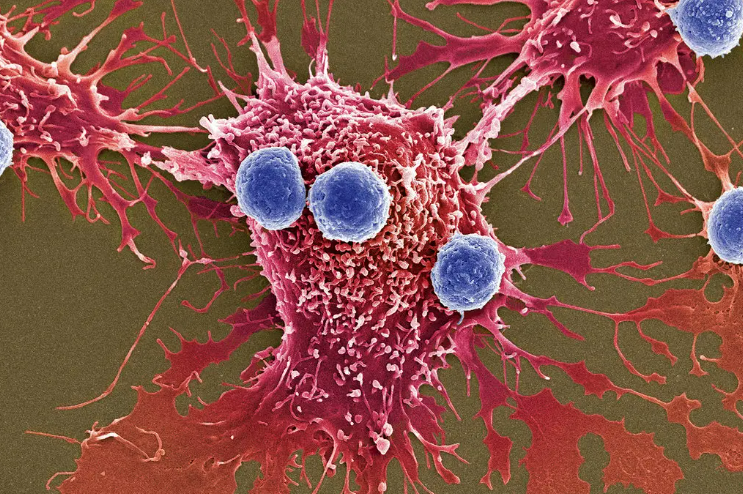我们通过发表论文来表彰学生 STEM 写作比赛的前八名获奖者。这是威廉·切斯尼(William Chesney)的作品。

。。。史蒂夫·格施迈斯纳/科学来源
这篇文章由来自纽约布朗克斯伦理文化菲尔斯顿学校的15岁的威廉·切斯尼(William Chesney)撰写,是学习网络有史以来第一届STEM写作比赛的前八名获奖者之一,我们收到了1,618份参赛作品。
A New Cancer Treatment That Is Faster, More Efficient and Less Risky Is Coming: Bacteria Bombs
Bacteria are usually thought of as microscopic, disease-causing nuisances. They have long been seen as something that needs to be washed away with soap and warm water, or killed en masse with hand sanitizer. But what if these stigmatized organisms could be used to fight cancer, the stubborn killer devastating millions of people? Scientists at the University of California, led by Jeff Hasty, are working to genetically engineer bacteria that will infiltrate tumors and kill them. Combined with conventional treatment such as chemotherapy, researchers are hoping bacteria will be very effective at killing tumors and, further, stopping them from spreading. If proven safe and effective, this bacterial treatment could provide a vital victory in the war against cancer.
The immune system regularly patrols the body to find and destroy cancerous cells, but tumors can disguise themselves as normal cells by releasing a protein that tells the body to leave the tumor alone. And so, the tumor hides in plain sight, invading the healthy tissue around it. Tumors use blood vessels that branch all over the surface of the tumor to steal resources. Chemotherapy delivers cancer killing drugs to the bloodstream, but these drugs can only reach as far as the blood vessels reach, and most of the tumor’s blood vessels do not get to the center of the tumor.
This is where the bacteria, specifically salmonella, can come to the rescue. The scientists at the University of California have changed the DNA of bacteria to seek out these tumors, and populate them without invading the rest of the body. The bacteria settle in and start to replicate. But, like little bombs, they soon explode and release “a toxic cocktail” in the words of Dr. Sally Adee. The cocktail contains “three types of cancer-killing drugs: one that destroys cell walls, one that alerts the body’s immune system, and one that triggers cells to die” according to Dr. Adee. This allows the bacteria to attack the tumor directly in a localized way to keep the damage away from other healthy cells. Importantly, it also alerts the immune system to begin its offensive by destroying the tumor’s immunosuppressive proteins. In his Nature Reviews Cancer article, “Engineering the Perfect (Bacterial) Cancer Therapy,” the University of Massachusetts professor Neil Forbes said, “the immune system plays a complicated role in bacteriolytic therapy; it provides a mechanism to guide bacterial accumulation, but also impedes dispersion and efficacy.” Thus the body and these bacteria form a surprising team in their war against cancer.
Of course, this treatment has risks. The main danger is that the bacteria will become the enemy and infect the person. To prevent this, researchers have modified the bacteria to not only thrive in the environment of a tumor, but also to struggle to survive in healthy tissue. This is a revolution in the way people have thought about cancer treatment. Bacteria may soon join the list of unlikely allies in the fight against cancer, joining the ranks of debilitating chemicals and harmful radiation.
Works Cited
Adee, Sally. “Self-Destructing Bacteria Are Engineered to Kill Cancer Cells.” New Scientist, 20 July 2016.
Forbes, Neil S. “Engineering the Perfect (Bacterial) Cancer Therapy.” Nature Reviews Cancer, 14 Oct. 2010.
Williams, Thomas. “New Cancer Treatment? Scientists Have Programmed Bacteria to Kill Cancer Cells in Mice.” The Conversation, 21 July 2016.
Zimmer, Carl. “New Weapons Against Cancer: Millions of Bacteria Programmed to Kill.” The New York Times, 3 July 2019.